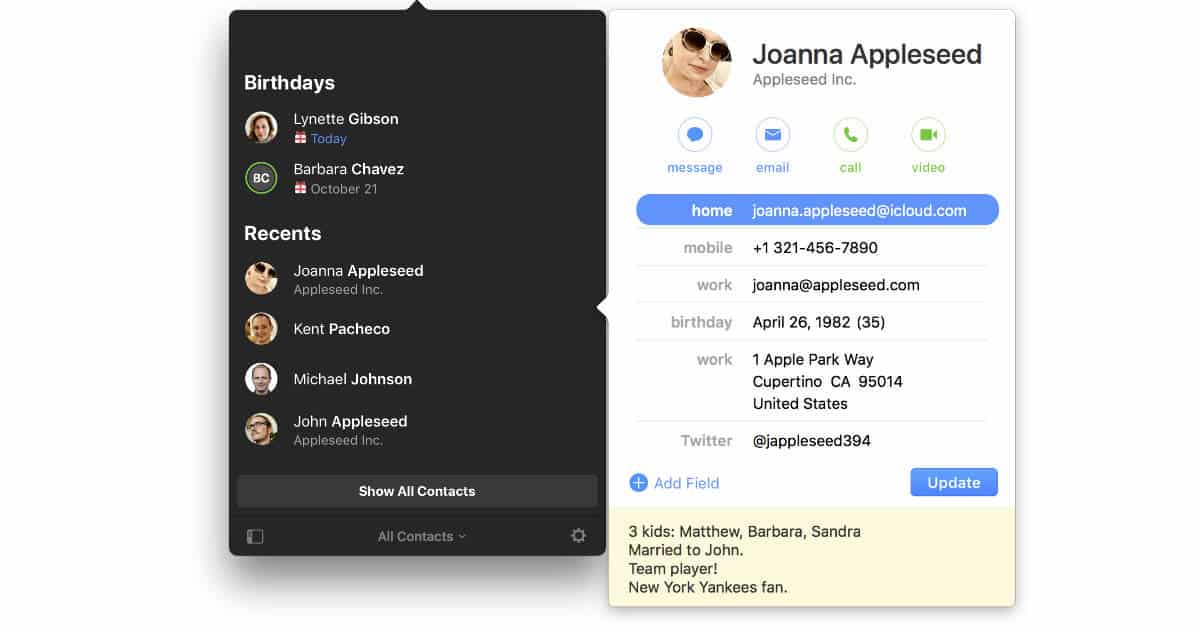

Most of the time, your interaction with Cardhop will start from its text field regardless of whether you’re looking for contact information you saved months ago or are adding a new contact. You can also hide the groups panel with a button at the bottom of the Cardhop window, which reduces Cardhop to its most minimal UI, which is how I prefer to use it because I don’t usually organize contacts into groups. If you want to see all your contacts though, they are just one button click away.

Below that is a column of contact groups on the left, which are the same ones you’d find if you open Apple’s Contacts app, and a list of recently contacted people and upcoming birthdays on the right. Clicking on Cardhop’s icon in your menu bar opens a detachable drop-down window with a cursor blinking in an empty field. In a communications app-centric world, I expect Cardhop will be a tough sell.Ĭardhop is based on a single text field that sometimes acts as a search field and other times is a text input field. Other apps and services make it easy to bypass contacts apps altogether with favorites and recent contacts lists. Email clients and messaging apps automatically fill in contact information based on past messages you’ve sent. However, contacts apps are less necessary today than ever before. Many contacts apps are notoriously clunky, hard to get information into, and prone to creating duplicates, which limits their utility. The app is beautifully-designed and powerful but solves a problem that I’m not sure many people have today. Now, Flexibits wants to do the same for contacts with a brand new app called Cardhop by integrating contact creation, management, and interaction into a single text field of a macOS menu bar app. It followed up with iPhone and iPad versions. Flexibits took much of the frustration out of calendars when it introduced Fantastical for macOS in 2011 by leveraging natural language input of events.


 0 kommentar(er)
0 kommentar(er)
